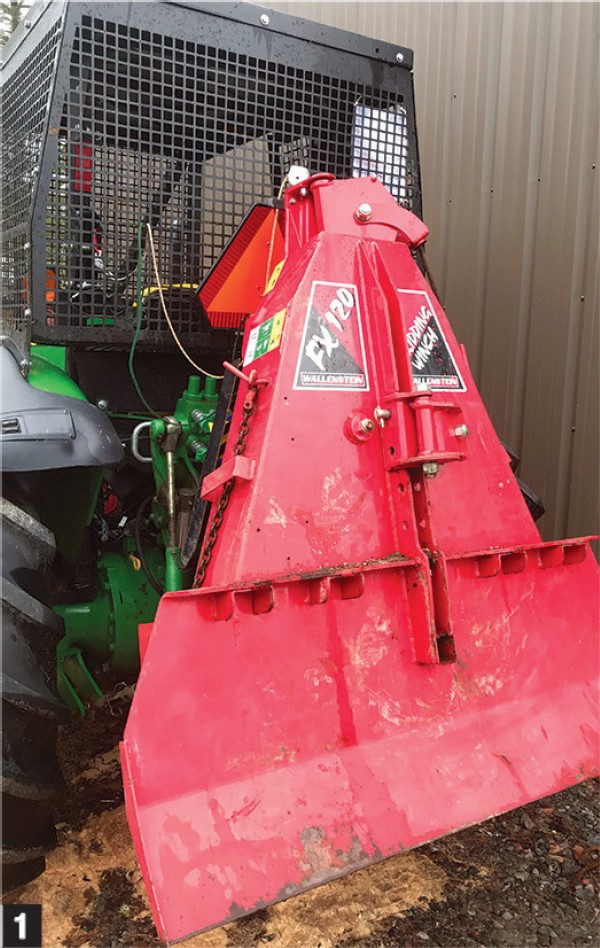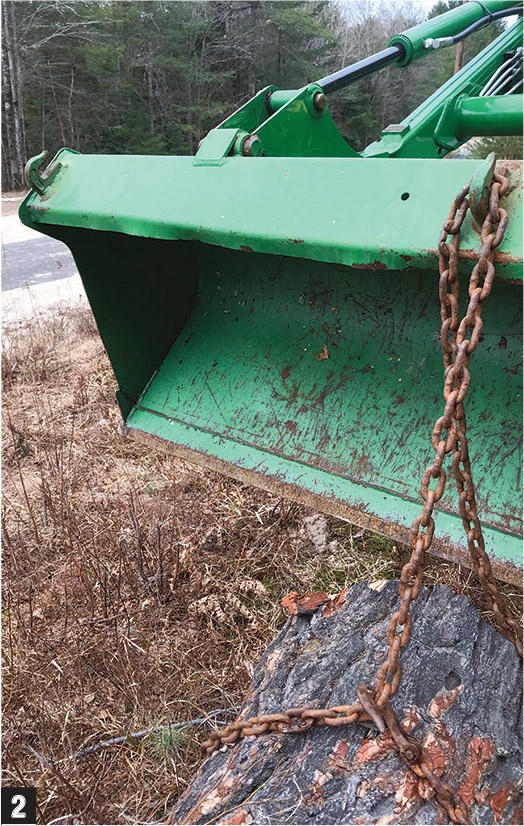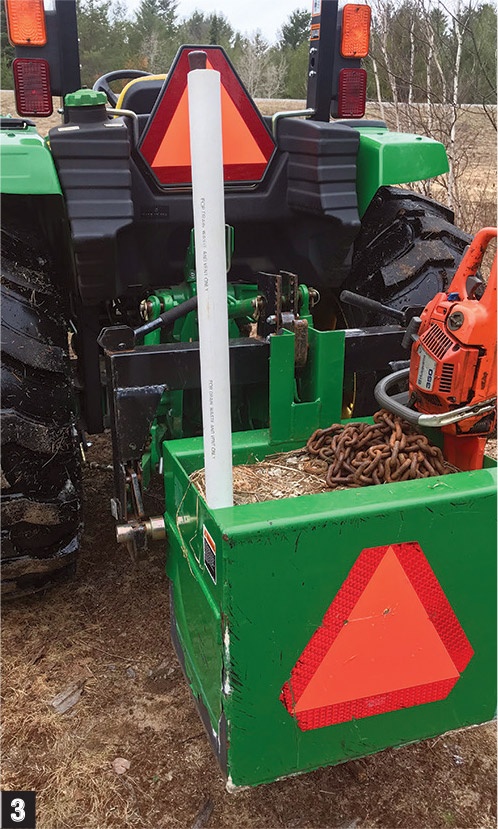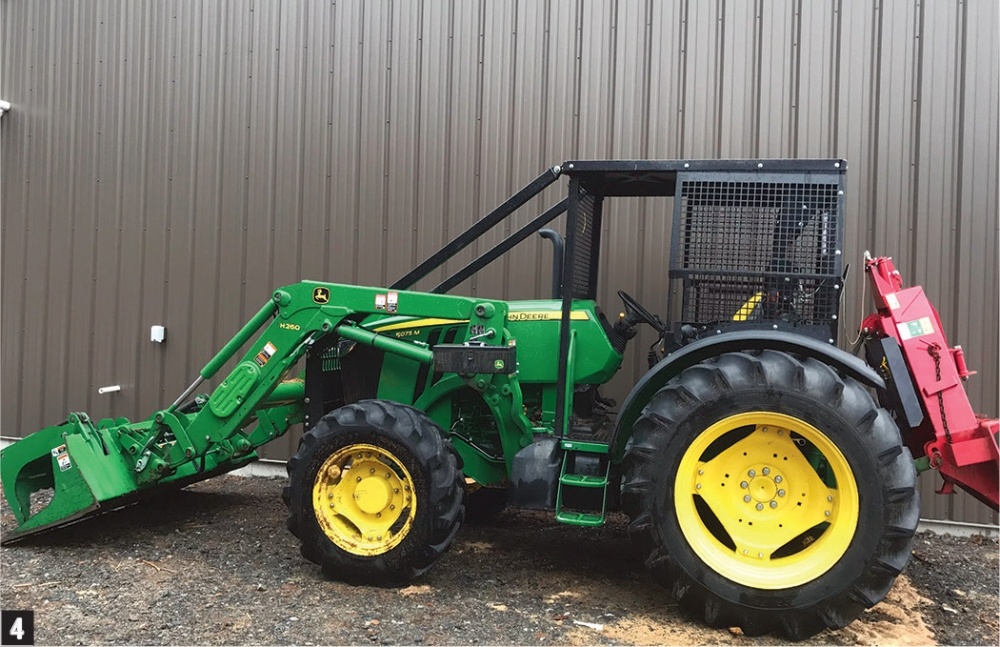Small, maneuverable four-wheel-drive tractors create an opportunity for woodlot owners to do more of their own forest management work. Since these types of tractors are primarily designed for agricultural use, however, several modifications should be made to increase safety and efficiency before heading into the forest. Here are some of the more common accessories and modifications.
Three-Point Hitch Winch: While it is possible to skid logs off the drawbar, a winch greatly increases the skidding capabilities of your tractor. (1) Without a winch, you’ll need to back up to each log for skidding, which may not always be possible given the log’s location. Additionally, having to drive to the butt of each log often results in residual stand damage, whereas the winch allows the operator to snake logs between trees while keeping the tractor closer to the skid trail.
The winch’s cable is operated off the tractor’s power take-off (PTO). As a cautionary note, the pulling strength of many winches is enough to lift (and potentially flip) the front of a tractor that doesn’t have a counterweight. Also, always make sure that the load is aligned with the center of the tractor; failure to do so could tip the tractor on its side when pulling the log in.
Counterweights and Loaders: Adding weight will give your tractor better traction and stability when working in the woods. If you’re using a winch, you’ll want a counterweight on the front of your tractor to preserve steering ability and traction. This may take the form of suitcase weights, or if you have a front-end loader, that can serve as a counterweight. If you need additional front-end weight, simply put a few large rocks in the bucket loader. Just remember to keep the load low to the ground to maintain stability.
If you find yourself only needing to skid small logs on occasion and can’t justify purchasing a winch, consider welding flat-backed hooks to your tractor bucket for light skidding. (2) This will allow you to lift one end of the log off the ground and skid in reverse. If you do this, you should consider adding a counterweight to the back of the tractor, especially if your rear tires aren’t filled with ballast. A weight box can also serve as a handy holder for chainsaws, choker chains, and tools. (3)
Chains and Valve Protection: Tire chains help to increase traction in snow, ice, and mud. V-bar and studded ice chains provide outstanding winter performance and are available even for small sub-compact tractors. Traditional double-ring chains are designed with overlapping cross-chain rings that are large enough to prevent the chain from falling in between a tire's tread lugs. They offer outstanding self-cleaning action and are long lasting. Often overlooked is the importance of protecting tire valve stems, which are susceptible to damage from logs, rocks, and slash. A short section of pipe welded around the valve stem makes for cheap insurance.
Canopy and Chassis Protection: Because of the overhead risks associated with forestry work, adding a forestry canopy around a tractor’s roll bar helps to protect the operator. Full canopies include limb risers that deflect trees and branches and have steel mesh screens on all sides. (4) Underbody skid plates protect vulnerable components from rocks, and a radiator guard reduces the chance of a stick puncture.





